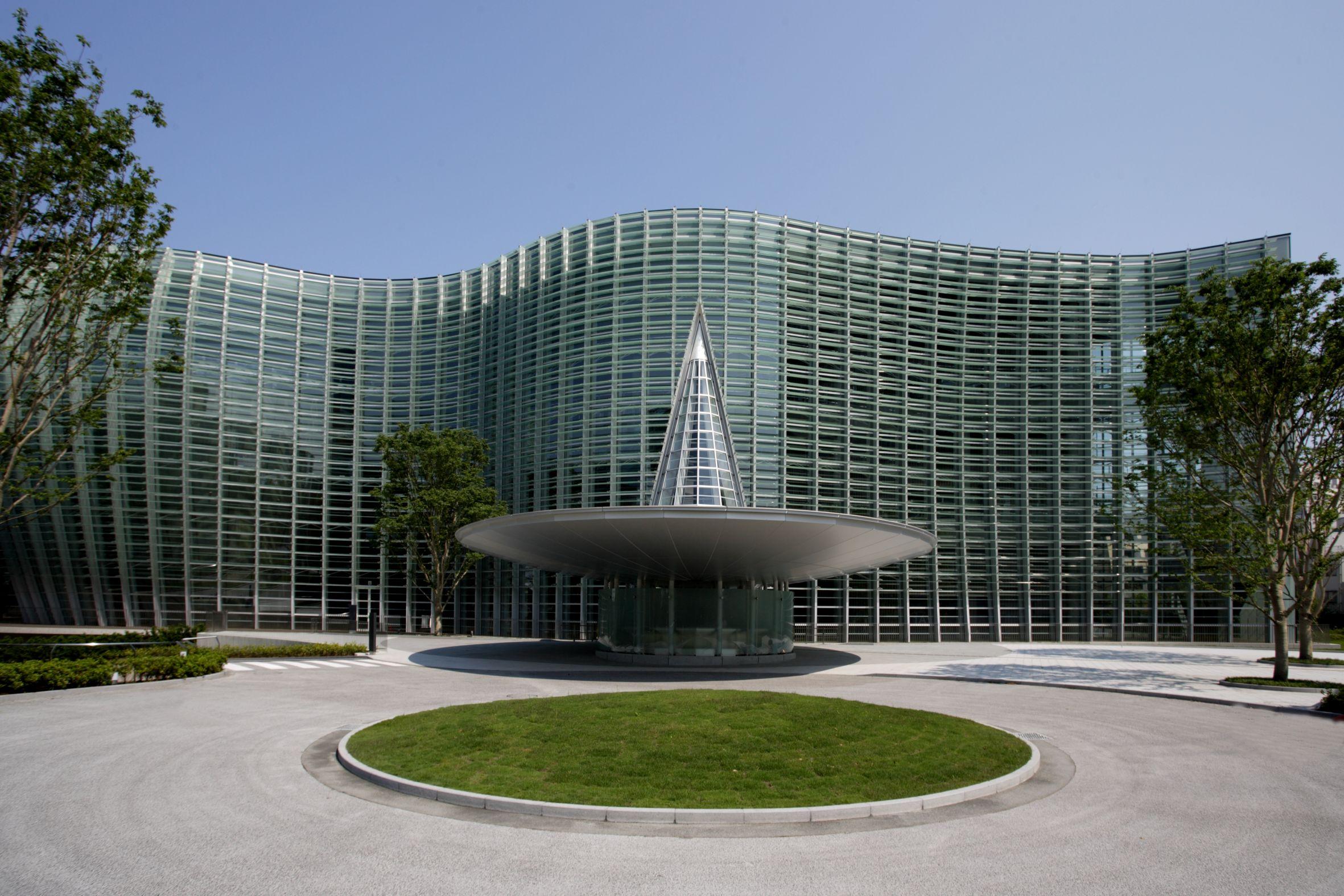Explore a master's singular architecture
The futuristic edifice of the National Art Center, Tokyo catches the eye with its undulating, wave-like glass exterior. The building was designed by Kisho Kurokawa (1934–2007), one of Japan’s most visionary twentieth-century architects.
Kurokawa was one of the founders and the leading proponent of Metabolism, an architectural movement that envisioned cities filled with structures that would keep growing and evolving, like living organisms. Perhaps the best-known example of this idea was the now-demolished Nakagin Capsule Tower in Shinbashi, a high-rise composed of box-like capsules stacked on top of each other.
Kurokawa designed many art museums both in Japan and elsewhere, but the National Art Center, Tokyo was the last of them to be completed during his lifetime. While not considered a work of Metabolism, the building includes several eye-catching features that speak to its designer’s attention to detail.
One of these is the use of conical elements: Center is entered through a transparent cone that shines like a lantern at night, and the 21.6-meter-high entrance lobby is dominated by a pair of massive inverted cones. A restaurant is perched on top of one of these cones, while the other hosts a cafe.
Also of note is the interior lighting, as exemplified by the “Lopposite from the façade. The soft, lantern-like glow from the lamps installed beyond the wooden elements of this wall complements the ample natural light filling the structure during the day.
The architecture can be viewed for free, as no ticket is required to enter the building itself.

